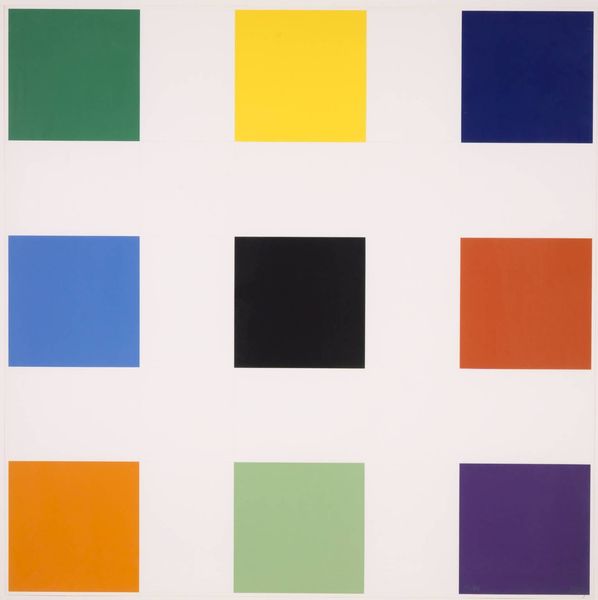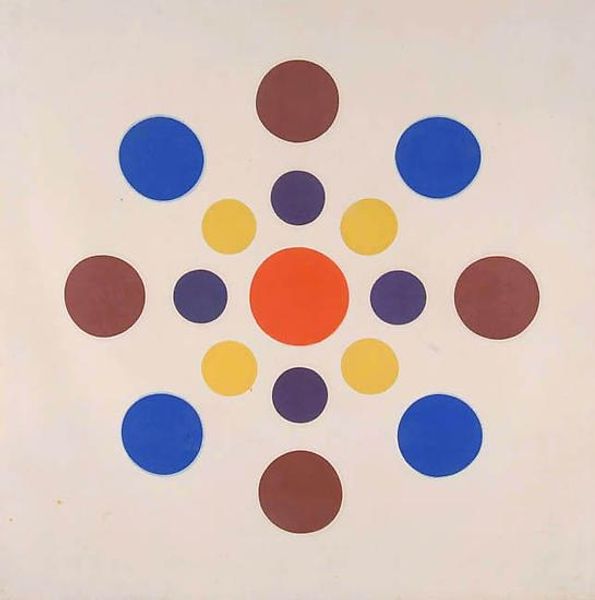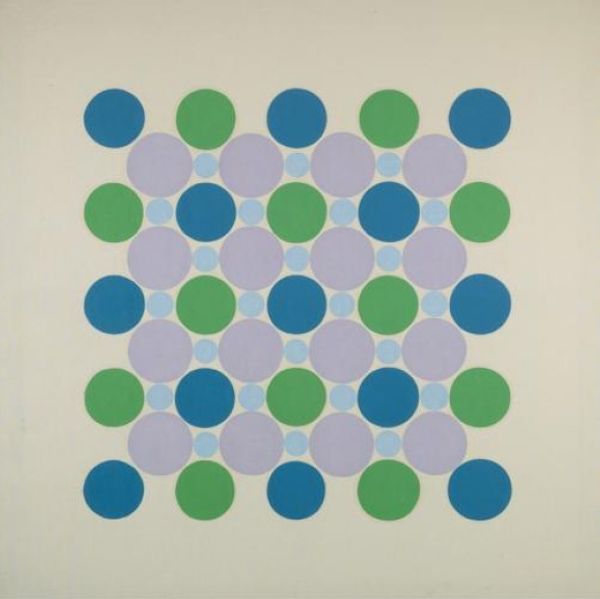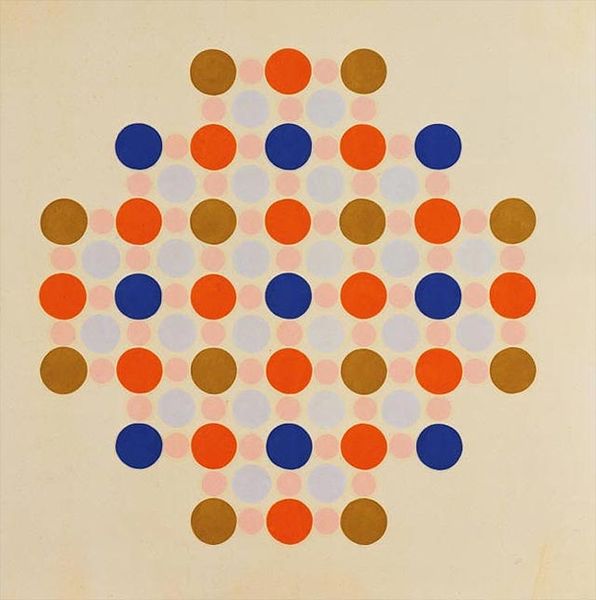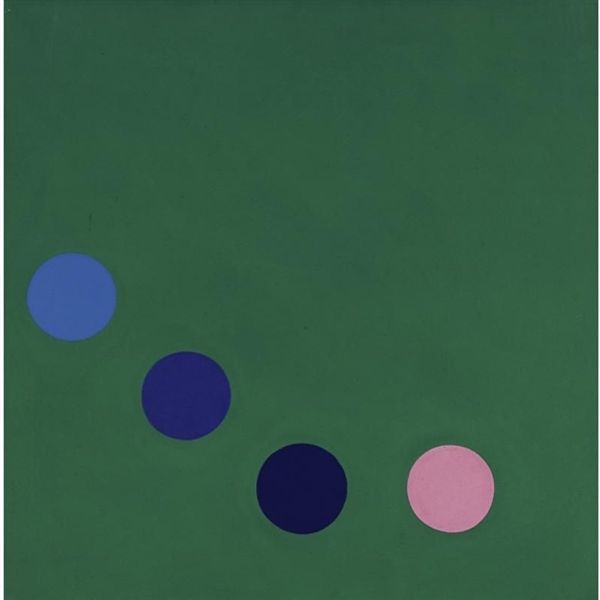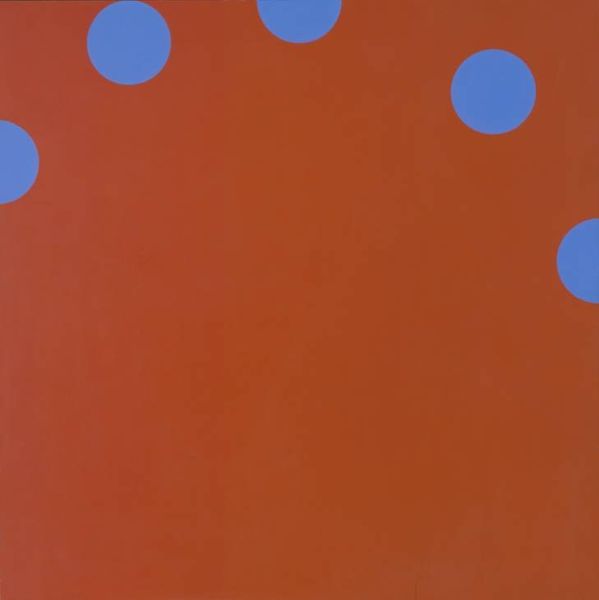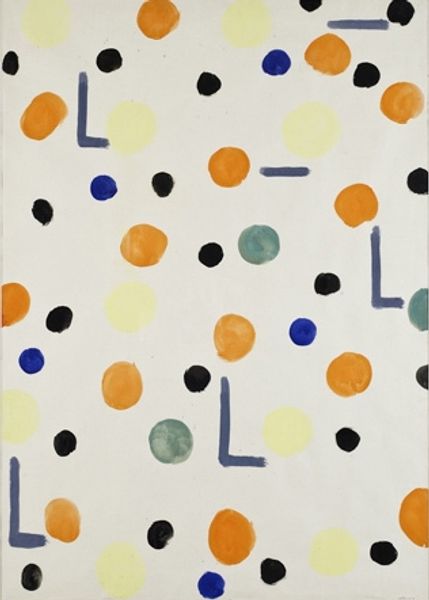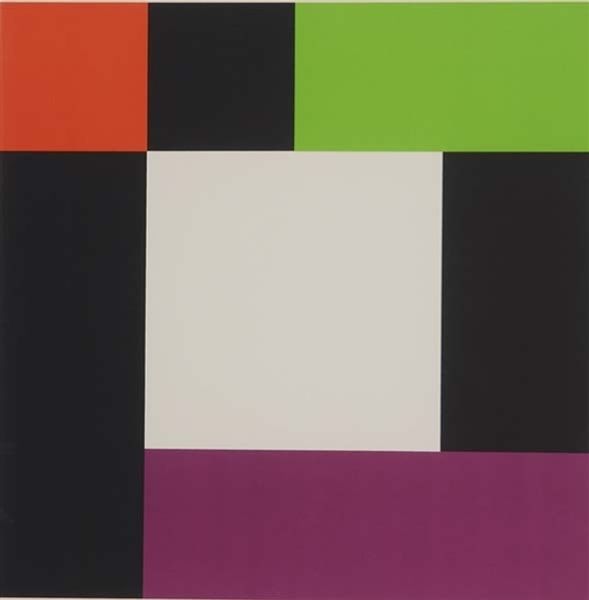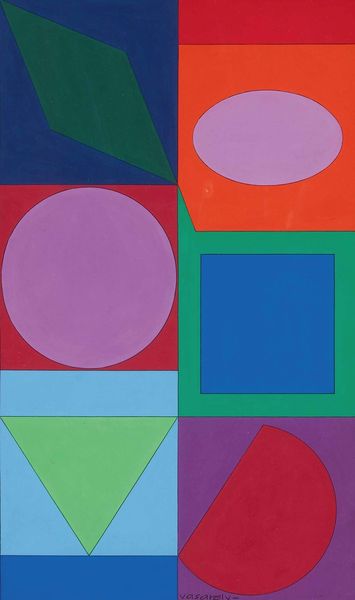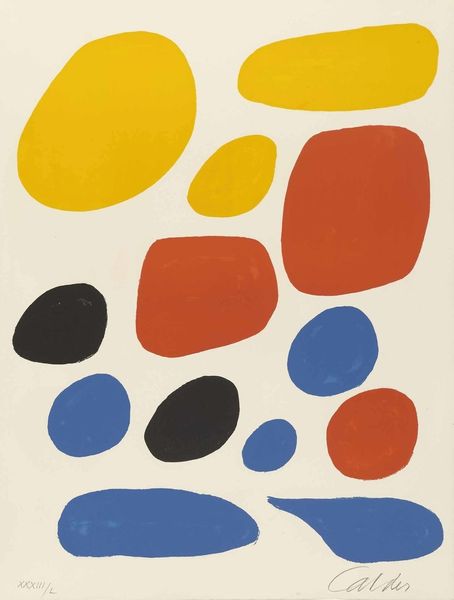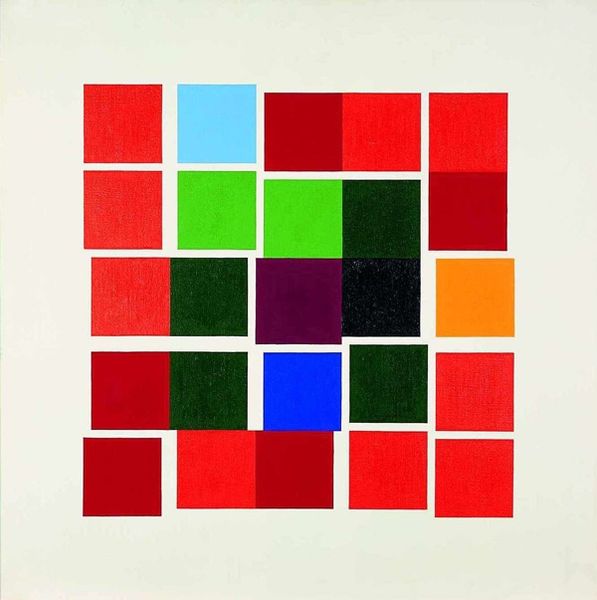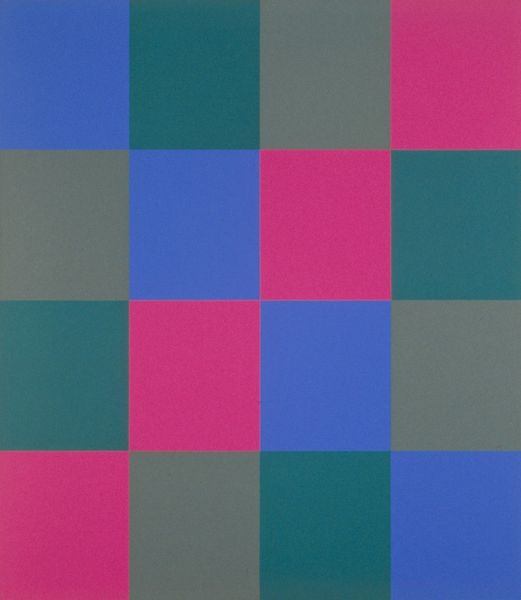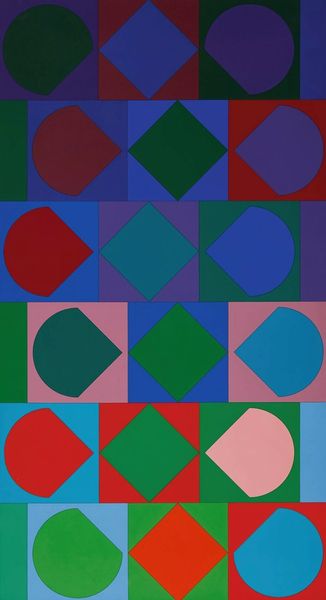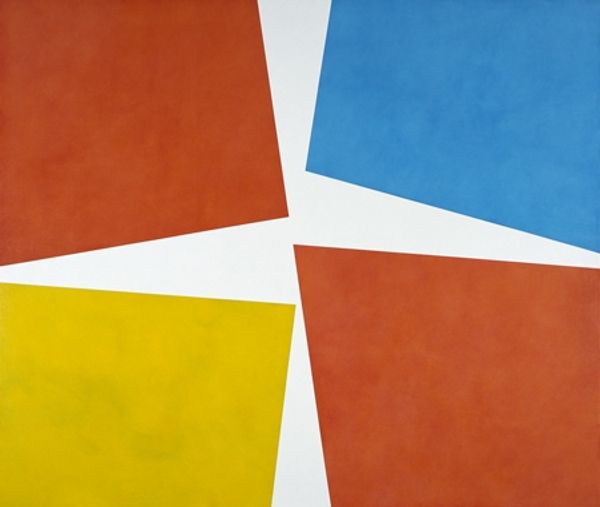
painting, acrylic-paint
#
op-art
#
painting
#
circle
#
pattern
#
op art
#
acrylic-paint
#
geometric
#
abstraction
#
line
Copyright: Francois Morellet,Fair Use
Curator: Up next is "Bleu-Vert-Jaune-Orange", executed by Francois Morellet in 1954. The artist utilized acrylic paint on canvas to produce it. Editor: Well, my immediate impression is a sense of playful, almost musical, simplicity. It's incredibly clean and ordered; those perfect circles floating in what looks like a regulated pattern against the stark white backdrop. Curator: Exactly. Morellet, emerging from the Parisian art scene, became a pivotal figure in the development of geometric abstraction and, eventually, op art. This work signals his early experiments in systematic arrangement and serial composition. It's no accident this piece predates some key tenets of op art's popularity in the mid 60's, because these patterns play upon perception, creating optical effects. Editor: Agreed! I’m wondering, do the colors hold a certain symbolic importance? The progression from cool to warm hues—is it suggesting something beyond pure aesthetics? Curator: Color as code, you might say. Some interpret the strategic repetition and the rigid geometry as a commentary on industrial standardization creeping into everyday life, a sign of cultural anxieties amidst post-war rebuilding. Editor: That interpretation carries weight considering that it was made in France only nine years after WWII, I wonder, though, what the public perception was at the time of viewing? Was this deemed "revolutionary" at that point? Curator: Contemporary critics definitely took note. The lack of emotional expression, a hallmark of the earlier Abstract Expressionists, signified a detachment, or objectivity of image-making that reflected social anxieties. Yet, to your point, the circles lend it a strange neutrality, too—it avoids harsh criticisms or definitive narratives. Editor: Which could be perceived as the artist trying not to be perceived politically one way or the other. Ultimately, a simple arrangement on the surface holds layers of socio-political reflection. Thanks for unraveling some of it for me. Curator: Indeed! Art so often asks us to find our bearings at an intersection between seeing and understanding; Morellet simply provides a potent meeting place.
Comments
No comments
Be the first to comment and join the conversation on the ultimate creative platform.
